Abstract
MICs of Bay y 3118, ciprofloxacin, ofloxacin, clarithromycin, azithromycin, cefuroxime, amoxicillin-clavulanate, and trimethoprim-sulfamethoxazole for 878 recent clinical isolates were determined by broth microdilution methods. Among the three quinolones, Bay y 3118 was the most active against Haemophilus influenzae, Moraxella catarrhalis, Acinetobacter baumannii, Xanthomonas maltophilia, gram-positive cocci, and anaerobes; MICs for 50% of the strains (MIC50s) and MIC90s were < or = 0.015 and < or = 0.015, < or = 0.015 and < or = 0.015, 0.03 and 2, 0.25 and 0.5, 0.06 and 1, and 0.12 and 0.25 micrograms/ml, respectively. For gram-positive cocci and anaerobes, these values were 16- to 32-fold (4 to 5 log2 dilution steps) lower than those for ciprofloxacin and ofloxacin. Bay y 3118 was similar in activity to ciprofloxacin and more active than ofloxacin against members of the family Enterobacteriaceae and Pseudomonas aeruginosa; Bay y 3118 MIC50s and MIC90s were 0.03 and 0.25 and 0.5 and 8 micrograms/ml, respectively. Scattergrams and regression analyses comparing quinolone MICs indicated that, despite differences in activity, organisms relatively susceptible to one were relatively susceptible to all and organisms relatively resistant to one were relatively resistant to all. However, the greater in vitro activity of Bay y 3118 was most pronounced against relatively resistant organisms. Pending pharmacokinetic and safety data for Bay y 3118, there is reasonable anticipation that its enhanced activity against gram-positive cocci and anaerobes would broaden the clinical utility of the quinolone class of antimicrobial agents.
Full text
PDF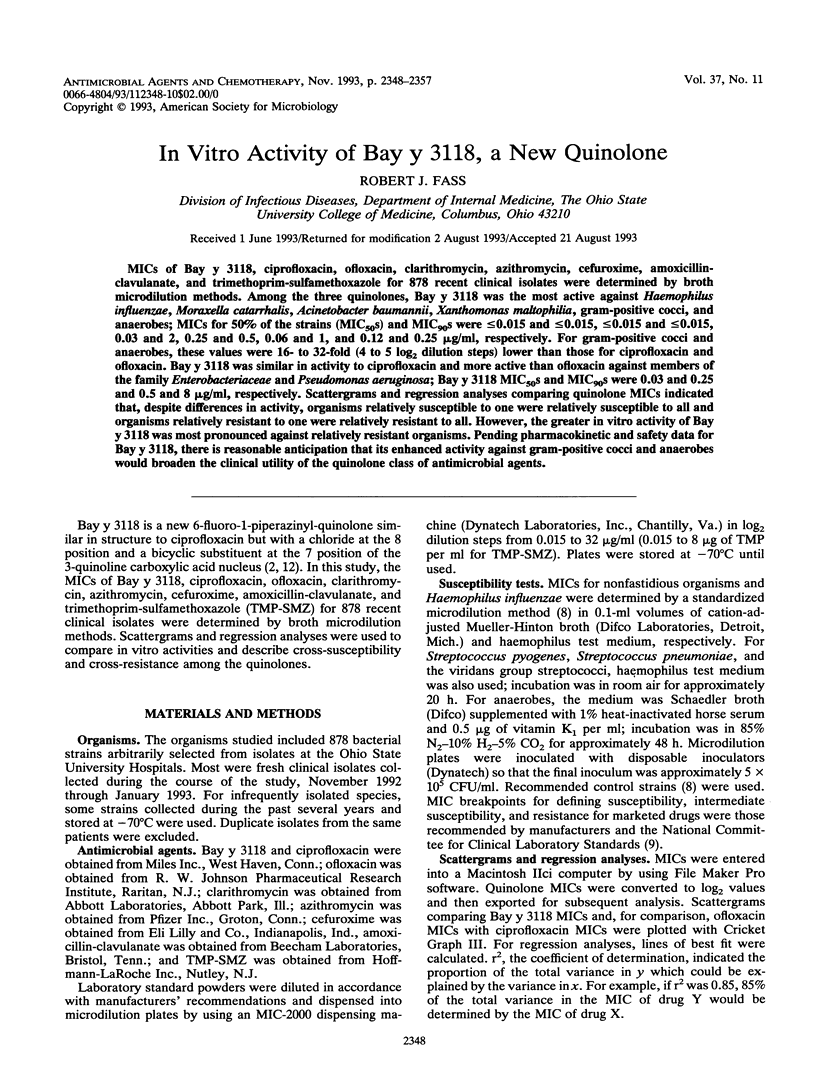
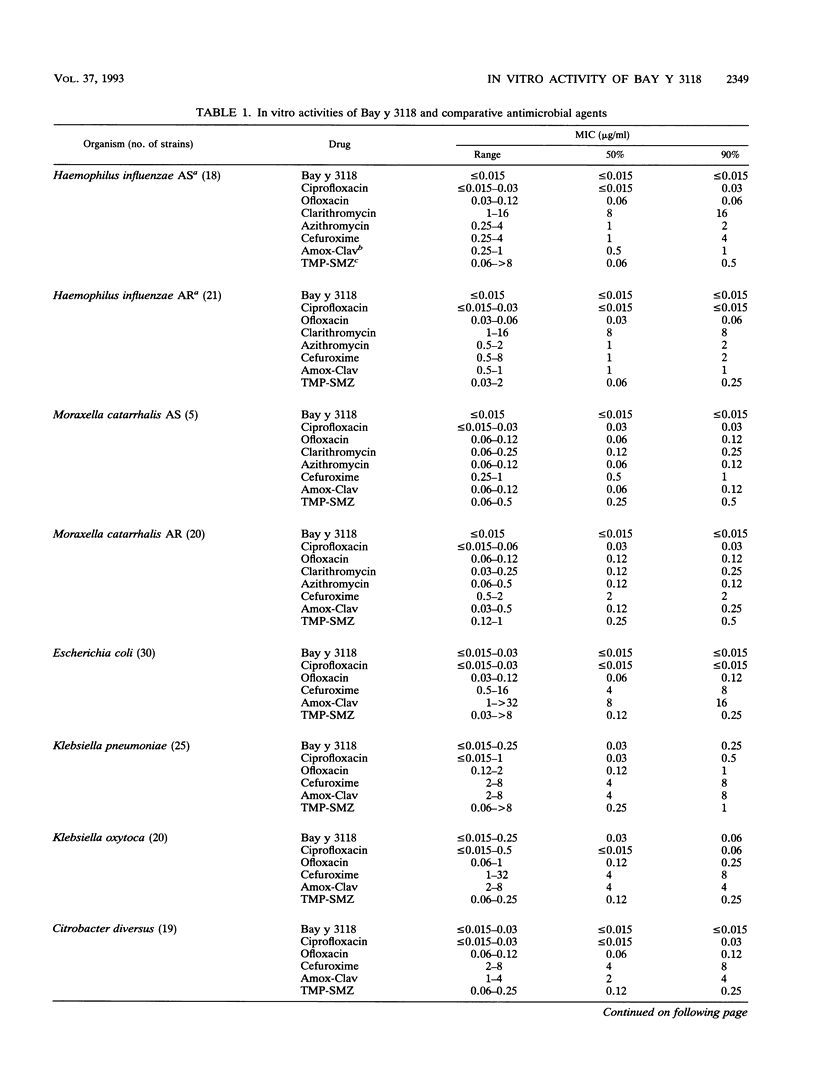
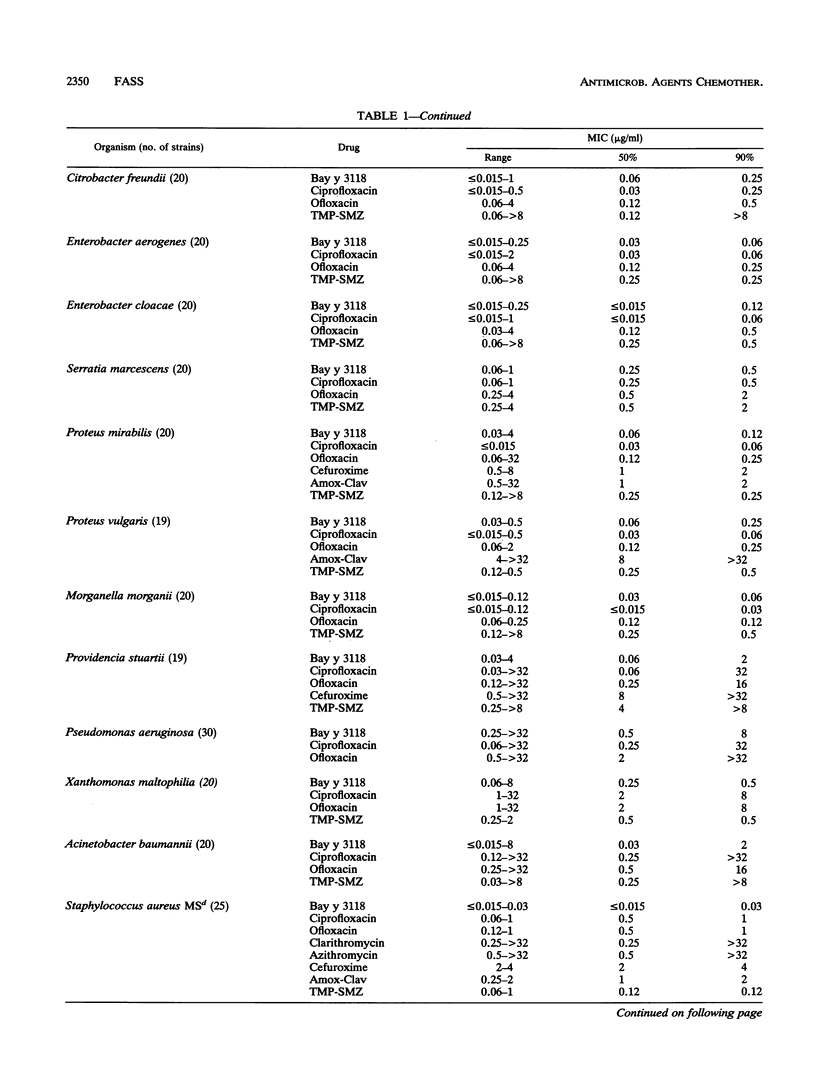
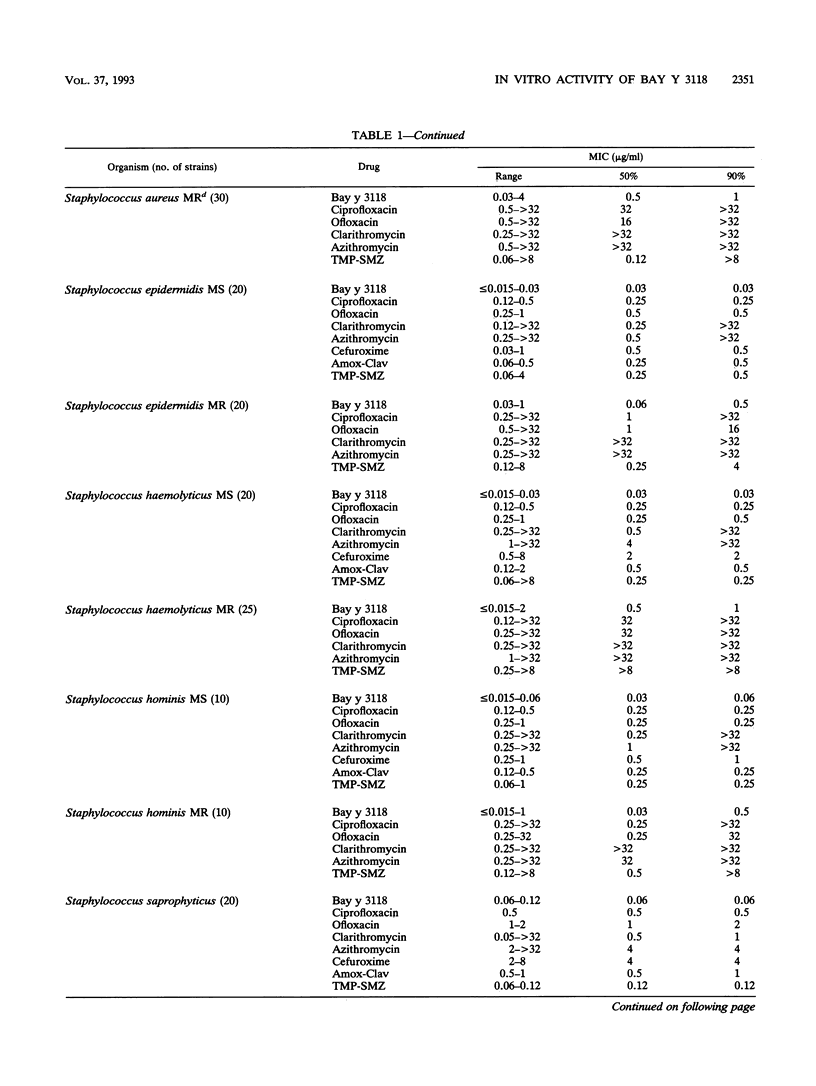
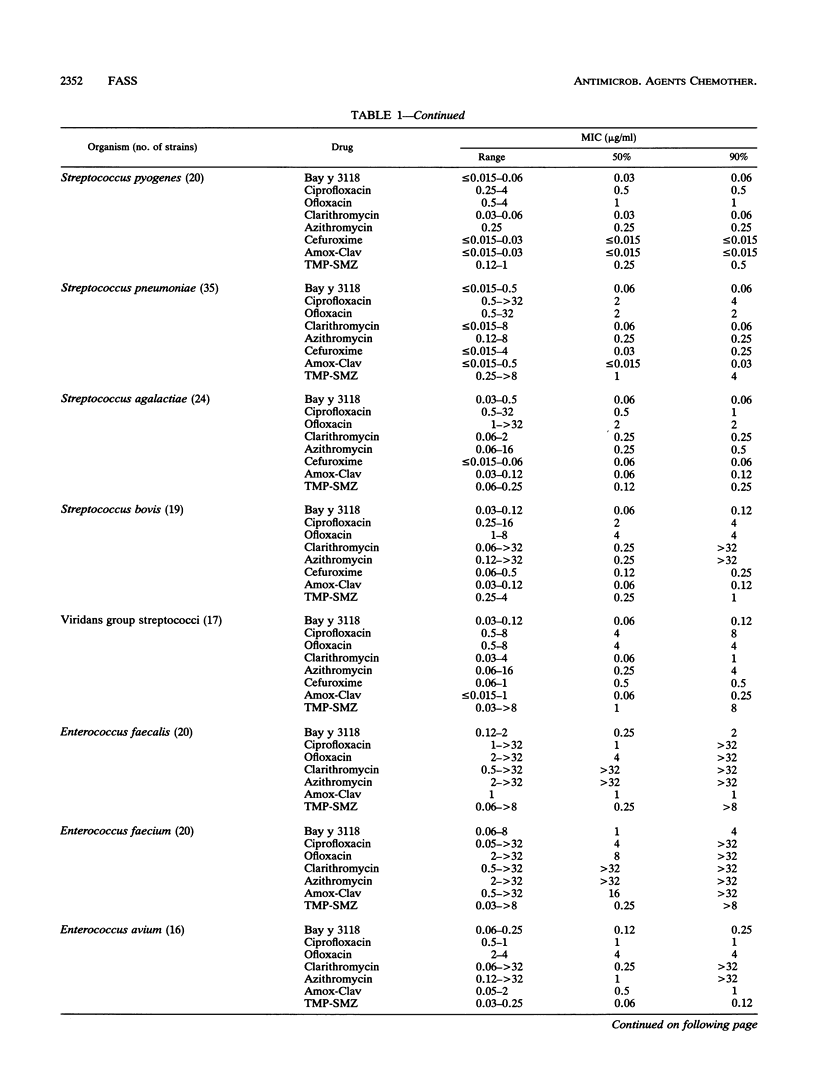
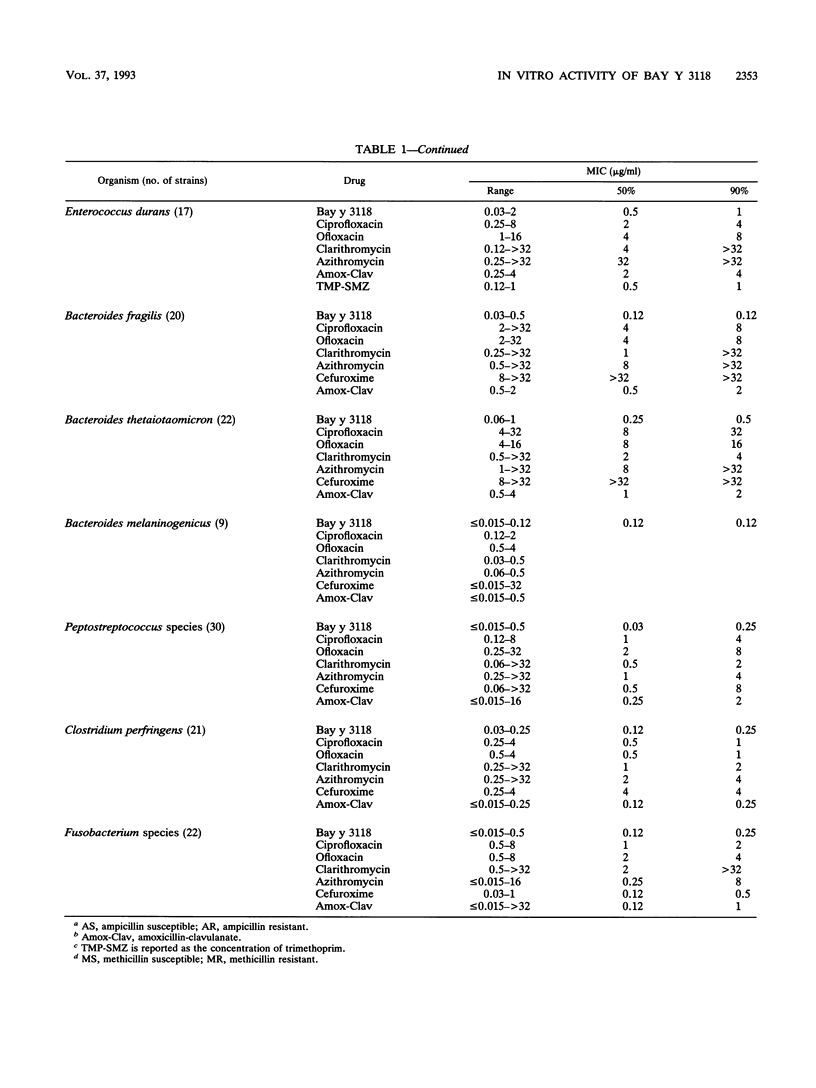
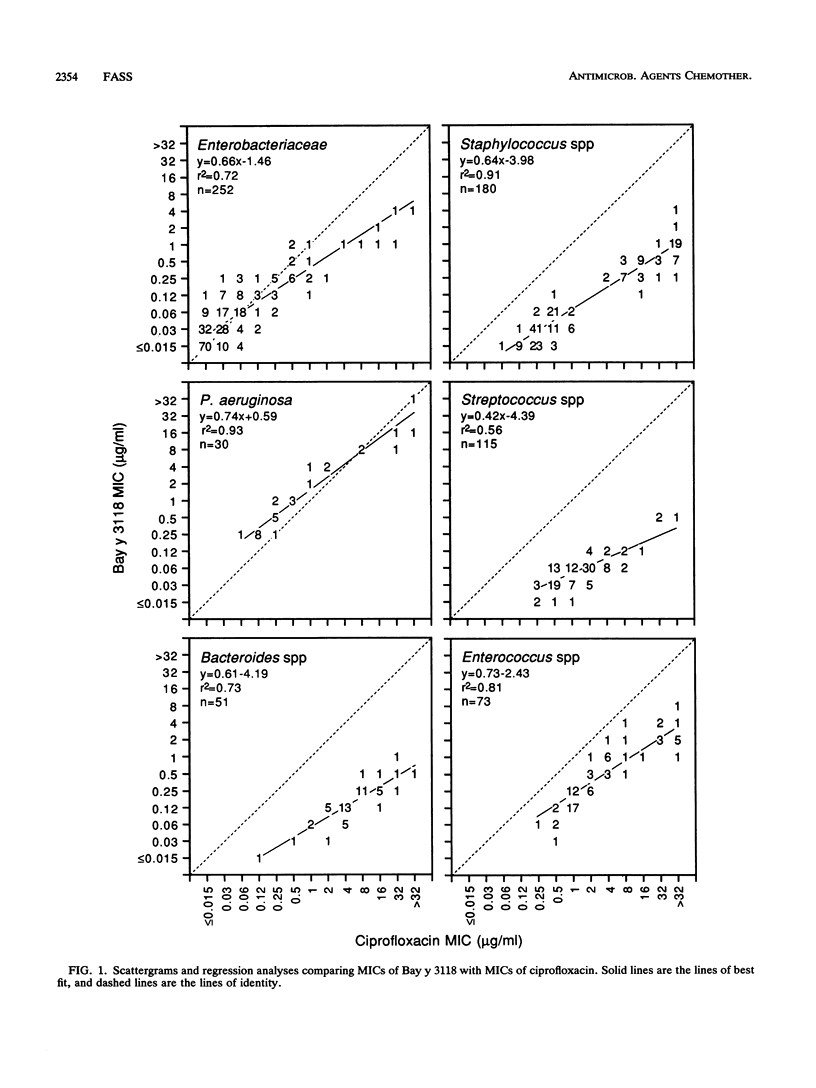
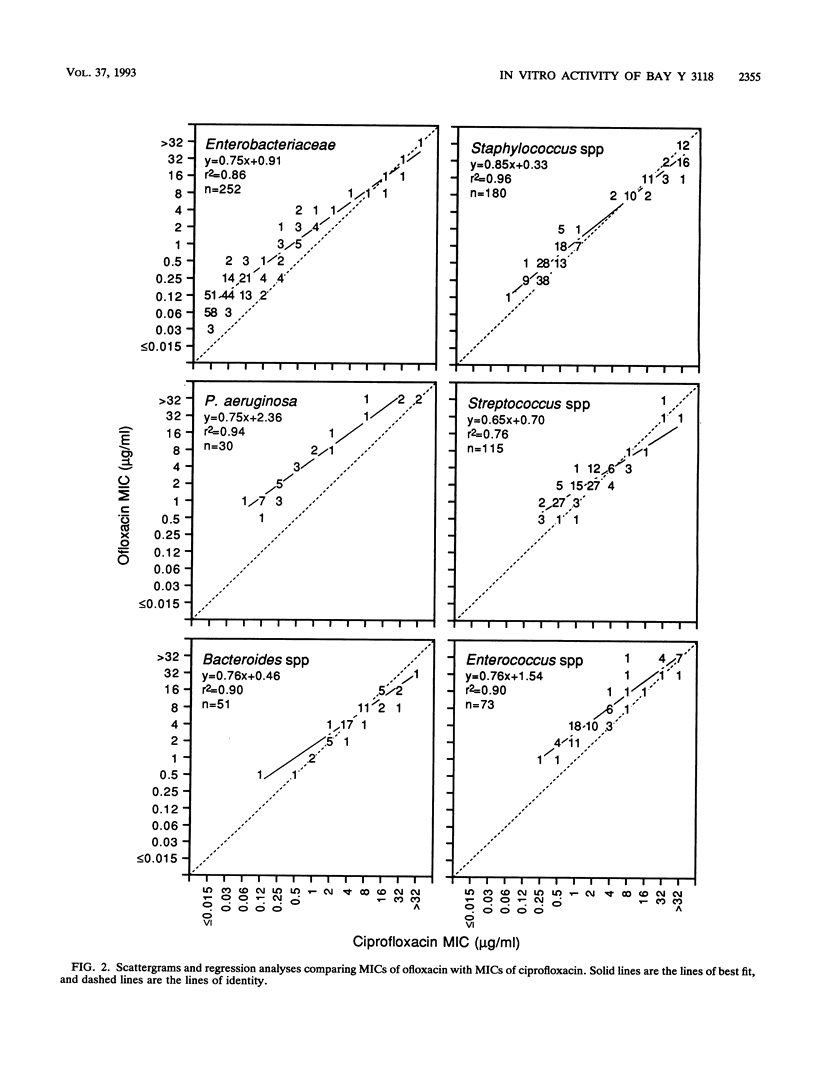
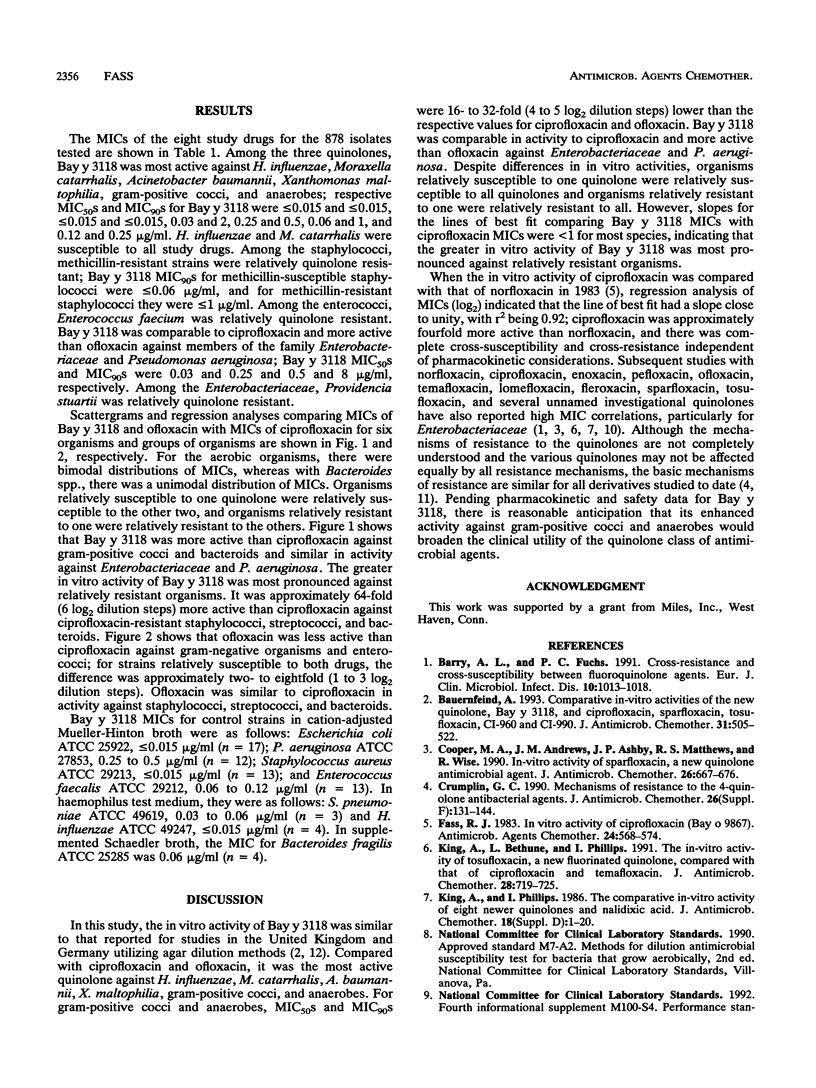
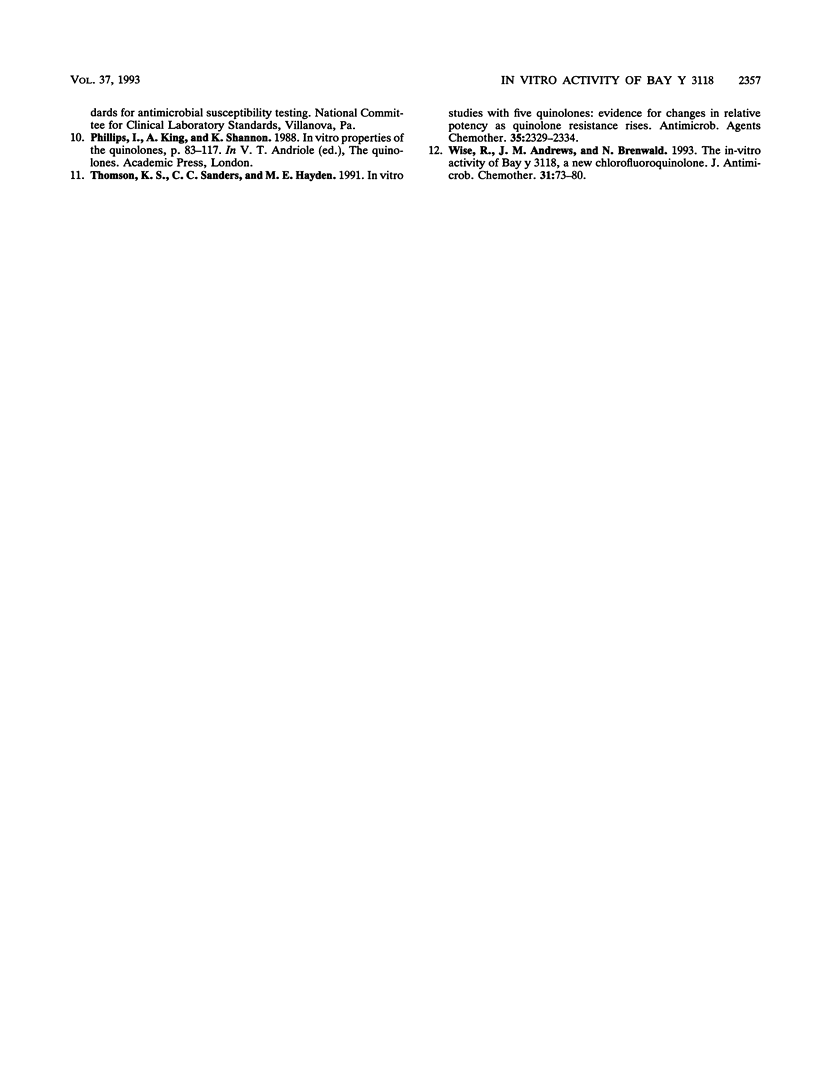
Selected References
These references are in PubMed. This may not be the complete list of references from this article.
- Barry A. L., Fuchs P. C. Cross-resistance and cross-susceptibility between fluoroquinolone agents. Eur J Clin Microbiol Infect Dis. 1991 Dec;10(12):1013–1018. doi: 10.1007/BF01984922. [DOI] [PubMed] [Google Scholar]
- Bauernfeind A. Comparative in-vitro activities of the new quinolone, Bay y 3118, and ciprofloxacin, sparfloxacin, tosufloxacin, CI-960 and CI-990. J Antimicrob Chemother. 1993 Apr;31(4):505–522. doi: 10.1093/jac/31.4.505. [DOI] [PubMed] [Google Scholar]
- Cooper M. A., Andrews J. M., Ashby J. P., Matthews R. S., Wise R. In-vitro activity of sparfloxacin, a new quinolone antimicrobial agent. J Antimicrob Chemother. 1990 Nov;26(5):667–676. doi: 10.1093/jac/26.5.667. [DOI] [PubMed] [Google Scholar]
- Crumplin G. C. Mechanisms of resistance to the 4-quinolone antibacterial agents. J Antimicrob Chemother. 1990 Dec;26 (Suppl F):131–144. doi: 10.1093/jac/26.suppl_f.131. [DOI] [PubMed] [Google Scholar]
- Fass R. J. In vitro activity of ciprofloxacin (Bay o 9867). Antimicrob Agents Chemother. 1983 Oct;24(4):568–574. doi: 10.1128/aac.24.4.568. [DOI] [PMC free article] [PubMed] [Google Scholar]
- King A., Bethune L., Phillips I. The in-vitro activity of tosufloxacin, a new fluorinated quinolone, compared with that of ciprofloxacin and temafloxacin. J Antimicrob Chemother. 1991 Nov;28(5):719–725. doi: 10.1093/jac/28.5.719. [DOI] [PubMed] [Google Scholar]
- King A., Phillips I. The comparative in-vitro activity of eight newer quinolones and nalidixic acid. J Antimicrob Chemother. 1986 Nov;18 (Suppl 500):1–20. doi: 10.1093/jac/18.supplement_d.1. [DOI] [PubMed] [Google Scholar]
- Thomson K. S., Sanders C. C., Hayden M. E. In vitro studies with five quinolones: evidence for changes in relative potency as quinolone resistance rises. Antimicrob Agents Chemother. 1991 Nov;35(11):2329–2334. doi: 10.1128/aac.35.11.2329. [DOI] [PMC free article] [PubMed] [Google Scholar]
- Wise R., Andrews J. M., Brenwald N. The in-vitro activity of Bay y 3118, a new chlorofluoroquinolone. J Antimicrob Chemother. 1993 Jan;31(1):73–80. doi: 10.1093/jac/31.1.73. [DOI] [PubMed] [Google Scholar]


